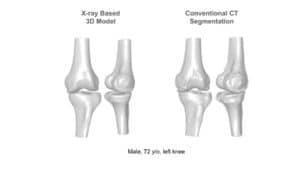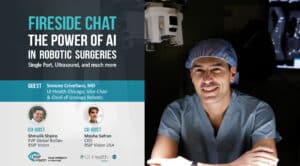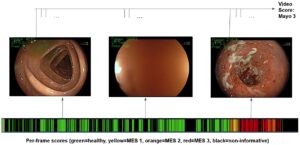RSIP Vision Presents New Urological AI Tool for 3D Reconstruction of the Ureter Improving Urological Procedures
Innovative technology utilizes 2D fluoroscopic images and reconstructs an accurate 3D model of the ureter for planning and guidance during ureteroplasty.
TEL AVIV, Israel & SAN JOSE, Calif., October 4, 2022 – RSIP Vision, a leader in driving innovation for medical imaging through advanced AI and computer vision solutions, announces today a new tool for 3D reconstruction of the ureter. This tool transforms 2D fluoroscopic images of the ureter into a medical grade 3D model. The reconstructed model will be used by the physician for diagnosis, procedural planning, and real-time navigation during a procedure. This new vendor-neutral technology will be available to third-party medical device manufacturers using C-arm imaging and viewer solutions, providing an advanced 3D tool for a variety of urologic procedures.
“Creating a 3D model from 2D images is a challenging task and requires vast experience and expertise.” said Ron Soferman, CEO at RSIP Vision. “By developing advanced deep-learning (DL) algorithms we managed to reconstruct an accurate 3D model of the ureter from 2D images. The inputs to the system are at least 2 fluoroscopic images of the ureter from different acquisition angles, and the output is a CT-grade 3D model of the ureter . This can be used in a variety of procedures in urology to assist the urologist in real time.”
Ureteroplasty, in addition to other urological procedures, utilizes a retrograde or intravenous pyelogram for visualization of the ureter. Often the pyelogram is the first step of a longer procedure requiring navigation through the ureter. The images from the pyelogram are 2D fluoroscopy images, lacking the depth dimension. As shown in this video, RSIP Vision’s new tool reconstructs an accurate 3D model from the 2D images which can be used as a reference “map” by the physician. This model can be used to improve accuracy during other urological procedures as well, such as stent placement, stone localization and retrieval, or general anatomical characterization.
“There is a great anatomical variability in ureter structure between patients,” said Dr. Rabeeh Fares, a clinical fellow at the medical imaging department at St. Joseph’s Health Centre, London, Ontario, Canada. “The ability to accurately model the ureter in real-time increases the physician’s confidence during the procedure. It will allow us to safely maneuver through the ureter, even in complex anatomies, and successfully perform the desired tasks. This tool ultimately reduces complication rates and improves patient outcomes.”






